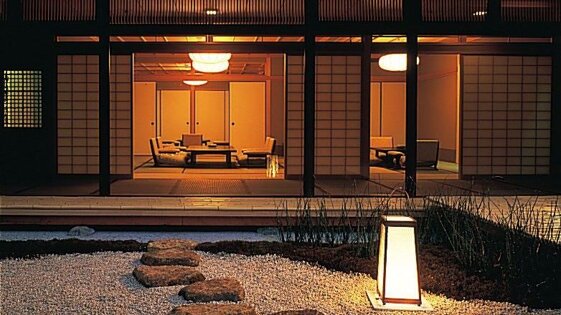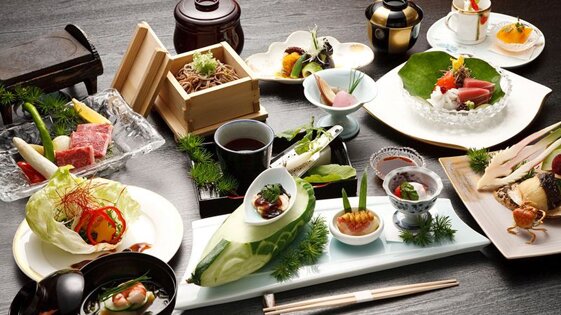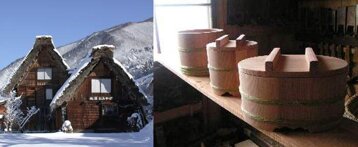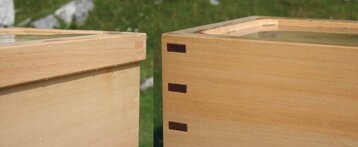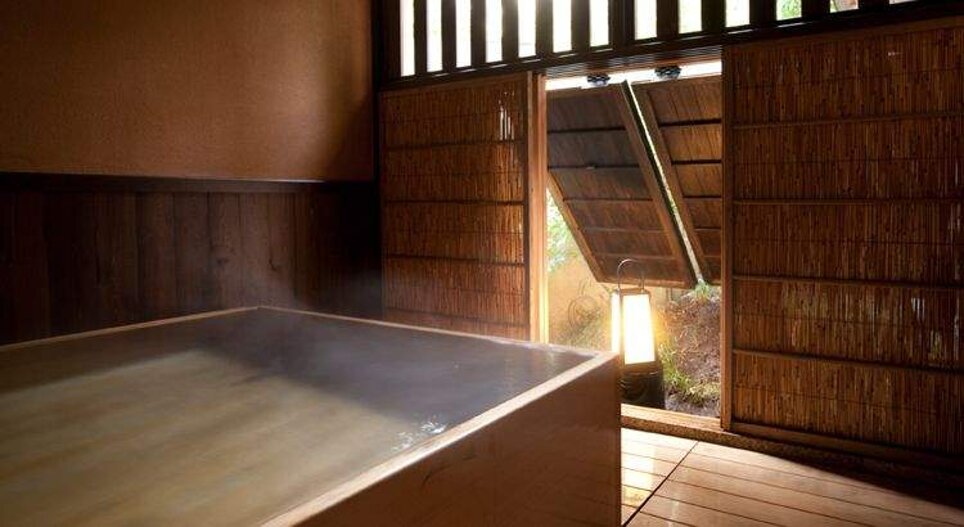
OFURO
THE JAPANESE BATH
ORIGINAL JAPANESE WOODEN BATHTUBS / CERAMIC BATHTUBS
VULCANI E SORGENTI TERMALI, FORESTE E SPIRITUALITÀ ZEN
Il Giappone è un arcipelago vulcanico, punteggiato da innumerevoli sorgenti termali e con due terzi della sua superficie coperti da foreste. La posizione geografica e la natura del territorio fanno sì che il clima e l'ambiente naturale abbiano un'influenza fondamentale sulla vita degli abitanti. Il radicato culto dei valori tradizionali conferisce ai giapponesi un indiscutibile senso di benessere, rendendo il Giappone uno dei paesi con la più alta aspettativa di vita.
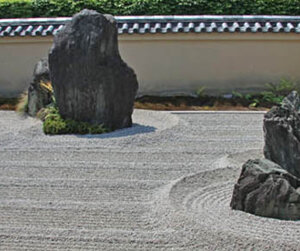
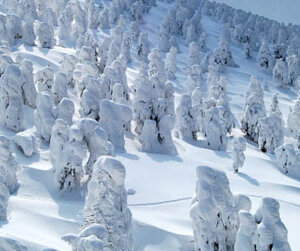
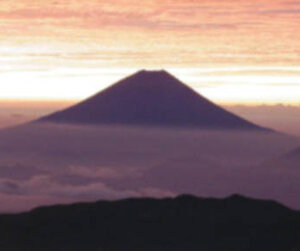
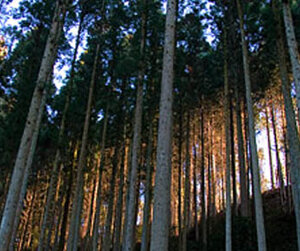
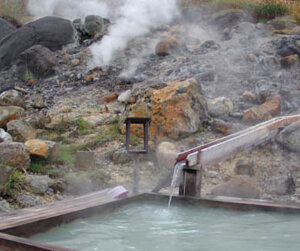

THE 'WARM WATER' TRADITION
Le tradizionali abitudini di balneazione dei giapponesi corrispondono ad aspetti pratici, ma sono anche plasmate da principi spirituali e morali che, analogamente alla cerimonia del tè, trovano la loro origine nello Zen buddhismo. Lo scopo principale è, naturalmente, l'igiene del corpo, a cui il giapponese medio tiene moltissimo. Si utilizza acqua termale o acqua riscaldata, relativamente calda, intorno ai 40°C. A causa delle condizioni climatiche, questo rituale viene eseguito molto frequentemente. Nell'afosa estate, il bagno surriscalda temporaneamente il corpo, donando un effetto lenitivo grazie alla continua espirazione della pelle. Nel periodo invernale, il bagno è un modo utile per riscaldare profondamente il corpo.
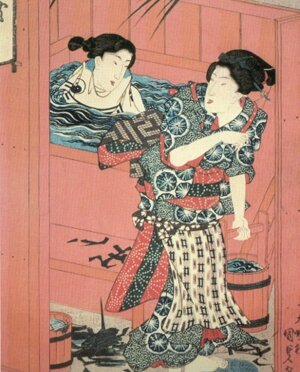


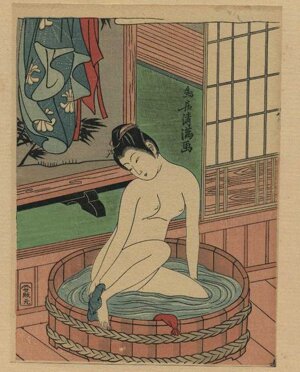
FIRST WASH ... THEN BATH
Sia a casa che nei bagni pubblici dotati di vasche più grandi, il bagno viene tradizionalmente fatto nella stessa acqua. Prima di entrare nella vasca da bagno, ogni persona si lava completamente il corpo, sedendosi su uno sgabello e usando l'acqua calda da un secchio, una bacinella o una doccia. In questo modo, l'acqua del bagno in cui si entra non si sporca e ci si abitua anche alla temperatura dell'acqua calda. Normalmente, i giapponesi fanno il bagno nudi e si coprono solo con un piccolo asciugamano.
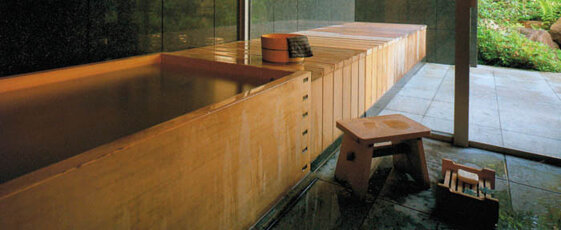
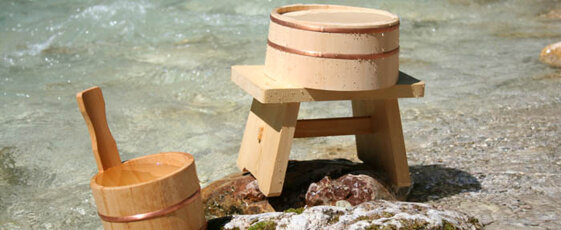
IMMERSE & RELAX
La cultura del bagno giapponese si basa sull'effetto rilassante e sul comfort che si prova immergendo il corpo in acqua molto calda. Questo effetto è considerato ideale quando il calore avvolgente dell'acqua è accompagnato da circostanze che offrono un'esperienza sensoriale completa: il tocco di materiali naturali, il profumo di essenze fragranti, la bellezza dei legni giapponesi con le loro venature chiare e ricche, il vapore, la fragranza e il colore dell'acqua, una vista panoramica o la vista di un elegante giardino - e tutto questo in una tranquillità armoniosa, interrotta al massimo dallo scroscio di una piccola cascata o rinfrescata da una lieve brezza.
Analogamente alla cerimonia del tè, anche il rituale del bagno giapponese si basa sui quattro principi wa-kei-sei-jaku: armonia - rispetto - purezza - silenzio.

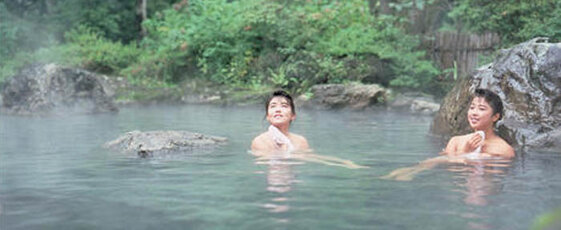
VARIOUS BATHING PLACES OFURO SENTŌ ONSEN ROTEMBURO
Esistono diverse varianti del rituale del bagno giapponese, a seconda dell'occasione e delle condizioni locali: ofuro indica il bagno in generale (nella propria casa), sentō si riferisce al bagno pubblico, onsen sono le terme e rotenburo è il bagno all'aperto, che spesso si distingue per paesaggi idilliaci immersi nella natura.
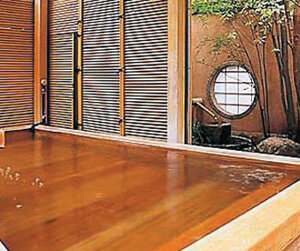
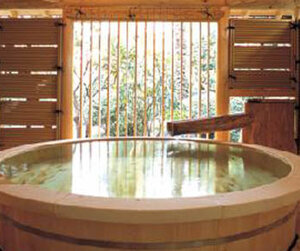
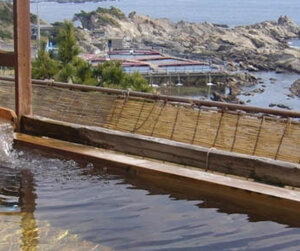
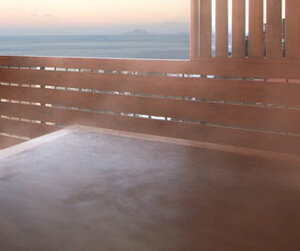
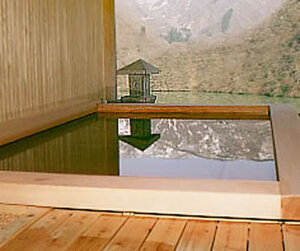

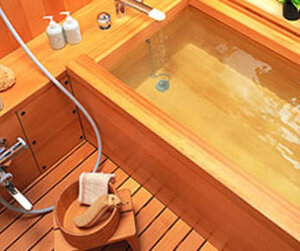
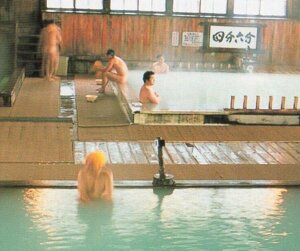
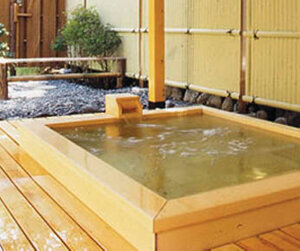

BENEFICIAL EFFECTS OF BATHING
Il bagno, soprattutto se fatto "alla giapponese" - cioè mediante una pulizia accurata del corpo seguita dall'immersione per il rilassamento - sottopone il corpo a cinque attività di base di cui spesso non siamo sufficientemente consapevoli, ma che sono descritte in dettaglio nella letteratura giapponese.
Il calore favorisce la sudorazione e la conseguente apertura e pulizia dei pori, ha un effetto regolatore sulla temperatura corporea, controlla sia il sistema nervoso simpatico che parasimpatico e normalizza l'attività cardiaca, attivando o calmando a seconda della temperatura dell'acqua.
La pressione dell'acqua normalmente non viene percepita quando si è immersi nella vasca. Tuttavia, con una maggiore consapevolezza, soprattutto se l'immersione avviene seduti fino alle spalle, si può notare che una certa compressione agisce sul torace, riducendo la circonferenza toracica di alcuni centimetri. Questo attiva i sistemi respiratorio, linfatico e la circolazione sanguigna.
Secondo il principio di Archimede, la forza di galleggiamento riduce il peso corporeo nell'acqua fino a un decimo. Questo crea una sensazione di leggerezza e libertà. L'acqua ha anche una certa viscosità che si oppone ai movimenti muscolari.
Sostanze chimiche come quelle contenute nelle sorgenti termali provocano reazioni particolari nell'organismo. Le sorgenti termali sono così chiamate per via delle sostanze oligominerali che contengono, le quali non si trovano nell'acqua di sorgente o di rubinetto ordinaria. In Giappone esistono innumerevoli trattati sull'ampio tema delle sorgenti termali e dei loro effetti sul corpo umano in termini di tipo di ingredienti, loro concentrazioni, interrelazioni ed esperienze con una varietà di onsen molto speciali con qualità dell'acqua particolari.
È la totalità degli effetti fisici e chimici così come il modo di fare il bagno a determinare il benessere del corpo. Temperatura corporea, pressione sanguigna, produzione di ormoni sono regolate dai ritmi quotidiani e nella vita odierna, stressante e frenetica, spesso vanno fuori equilibrio perdendo il loro flusso regolare. Fare il bagno in acqua calda con la sua pressione statica e galleggiamento, così come le sostanze aggiuntive, stimola il corpo in modi diversi affinché il ritmo disturbato venga riportato al suo equilibrio originario. Non si va alle terme giapponesi "per curare una malattia" ma piuttosto per "stimolare il proprio potere di autoguarigione".
Il cambiamento di luogo, ad esempio in occasione di una vacanza o di una "fuga" nella natura, produce un effetto calmante e sobrietà (effetti psicologici positivi) ancora prima degli effetti fisici e curativi sul nostro corpo. Un ambiente come quello che si trova in montagna o al mare suscita particolari stimoli nel corpo: cambiamenti di temperatura, pressione dell'aria e quindi contenuto di ossigeno stimolano il polso, la respirazione e il metabolismo.
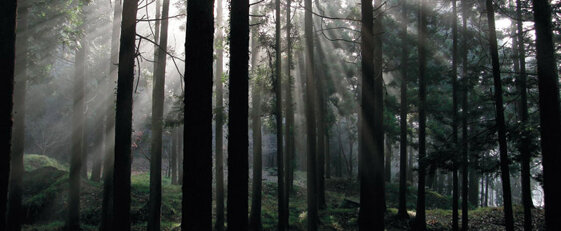
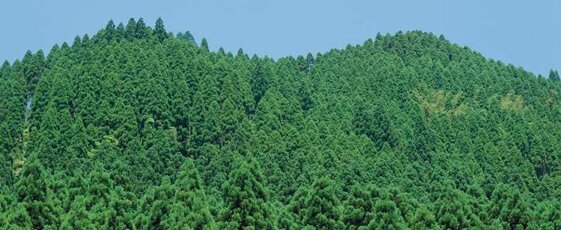
RYOKAN - JAPANESE WELLNESS SPA
Una tipica forma giapponese per brevi vacanze rigeneranti sono i soggiorni nei cosiddetti ryokan o onsen-ryokan, tipiche locande termali in stile giapponese, arredate con tatami, shoji e letti futon, dove l'elevata cultura del bagno si combina con le delizie culinarie della sana cucina giapponese - un luogo cortese dove rilassare mente e corpo.
La cultura del washoku, come viene chiamata la cucina giapponese, si esprime al massimo grado in questi luoghi, sia per quanto riguarda gli ingredienti utilizzati e la loro preparazione, sia per la presentazione estetica dei piatti, compresa la stoviglieria originale in porcellana, lacca, legno, ecc. Il washoku è stato dichiarato Patrimonio Immateriale dell'Umanità dall'UNESCO nel 2013.
